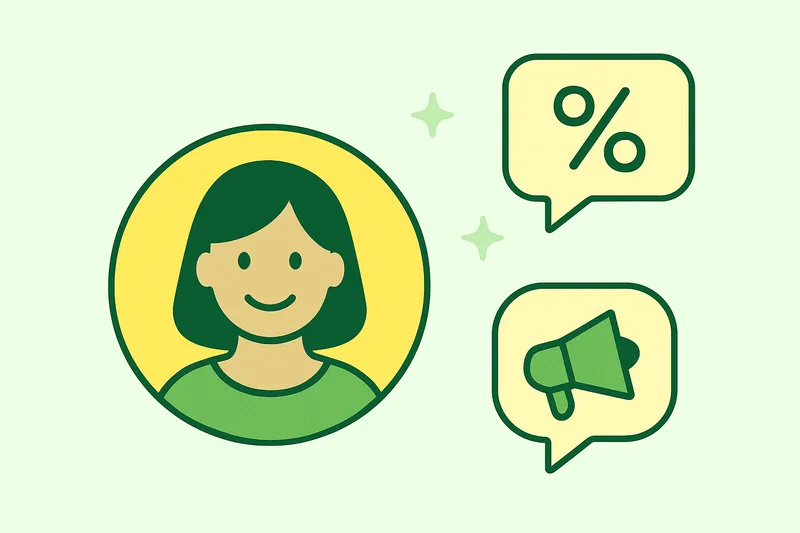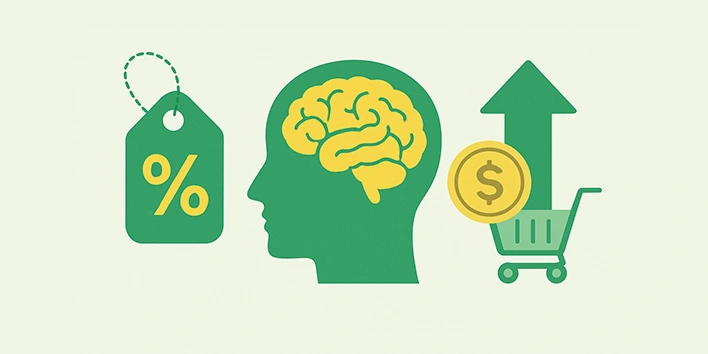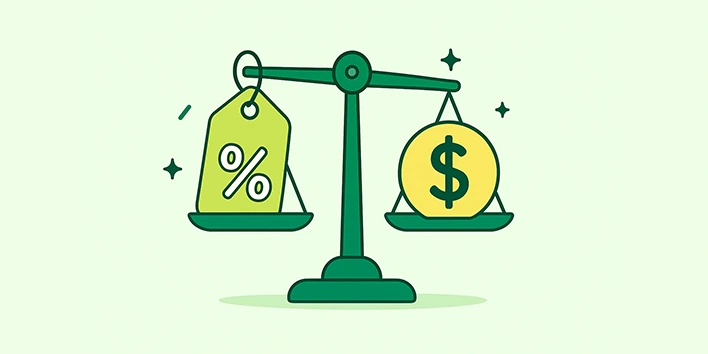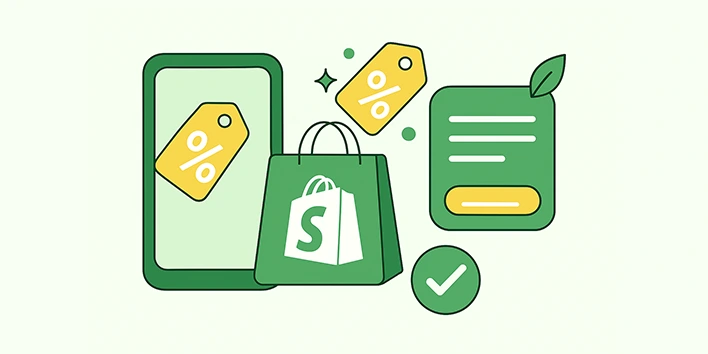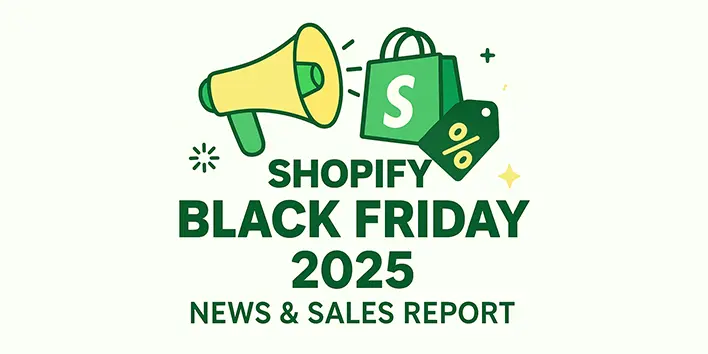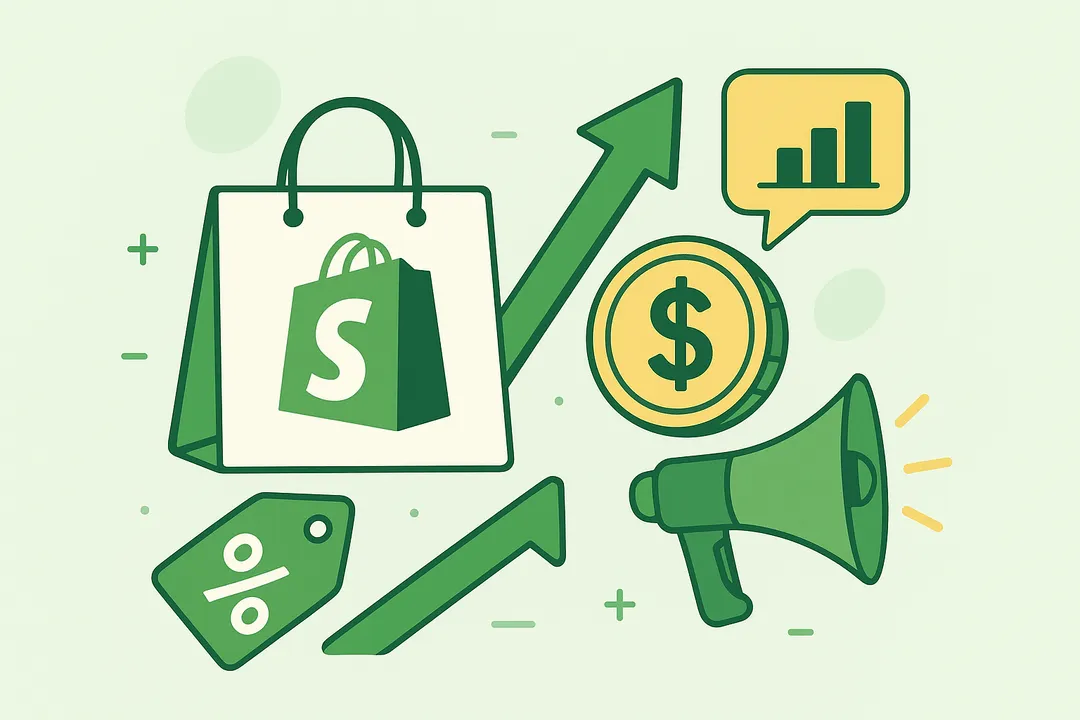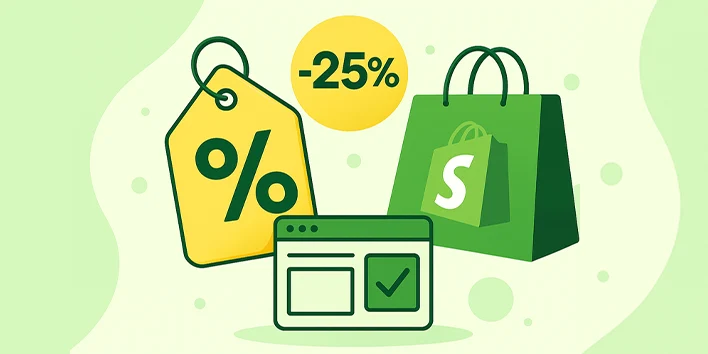What would happen if your most loyal customers were your most effective sales team? They already love your products, they trust your brand, and they are already telling their friends about you. What would happen if you could nudge them a bit, and say thank you, to share the word? That is the straightforward yet effective concept of a referral discount. It is a marketing technique that pays your current customers to refer new customers to your shop. Consider it as a formal method of promoting word-of-mouth, which remains one of the most effective forces behind buying behavior.
What Exactly is a Referral Discount? (And Why Your Shopify Store Needs One)
What is the big deal with referral rewards and incentives then? A referral discount is a reward that you give to an existing customer when they manage to encourage a new person to buy something. This reward may be a percentage discount, a dollar amount, store credit, or even a free product.
The beauty of this strategy is that it is usually two-sided: the new customer is also offered a welcome discount, so their first purchase will seem like a no-brainer.
The Undeniable Benefits of a Referral Program
In the case of Shopify stores, a thought-out referral program is not a nice-to-have, but a real growth engine. Here’s why:
- Build Real Customer Trust (Faster): A recommendation from a friend is gold. Referred customers to your brand come with a pre-existing trust, and thus they are far more likely to convert. In the era of online reviews that are here today and gone tomorrow, a personal recommendation stands out.
- Attract High-Quality Customers at a Low Cost: Tapping into your existing customer base is far more cost-effective than running expensive ad campaigns. You are not paying per click or impression, you are rewarding real sales, which keeps your customer acquisition costs low and profit margins high.
- Boost Your Revenue and Customer Lifetime Value: Referred customers aren't just one-and-done shoppers. They are more likely to buy and possess a higher lifetime value. And, when you reward your existing customers, you are not only motivating them to remain loyal to you but also making them feel appreciated, which can transform them into lifelong brand ambassadors.
A Quick Look at the Psychology: Why Referrals Just Work
A referral program is fundamentally based on human nature. We believe in those we are familiar with. When a friend suggests a product, we are more likely to take it into consideration since the suggestion seems genuine and personal. This is a basic rule of successful selling, and it affects our psychology of pricing strategies to the Psychology of discounts.
Read More: FOMO Limited-time Discount
How to Choose the Perfect Referral Rewards for Maximum Profit
Okay, you are convinced. The big question is, what type of reward will really make people act? The selection of the right referral rewards is not a matter of guessing but rather a matter of strategy. This is how to do it right.
Step 1: Decide Who Gets the Reward (The Referrer, the Friend, or Both?)
First things first, who are you trying to motivate? This decision lays the foundation for your entire program.
- One-Sided Rewards: In this model, only one person gets a reward—either the existing customer for sharing, or the new customer for signing up. This can work, but it’s less powerful because one person is always left out.
- Two-Sided Rewards (Recommended): This is the "win-win" model where both the referrer and their friend get a reward. It's the most popular and effective structure for a reason: the existing customer feels generous for sharing a great deal, and the new customer gets an immediate incentive to make a purchase. Over 90% of referral programs are two-sided because it simply works best.
Step 2: Select the Right Type of Reward
After you have identified who you are rewarding, you must determine what to reward them with. You want to choose something that your audience is interested in.
- Cash or Cash Back: Money is a universal motivator. It is scalable, easy to understand, and is particularly effective with products that have a long purchase cycle (such as a mattress or a car), where a store discount may not be redeemed in years.
- Store Discounts & Credits: This is perfect for brands where customers are likely to make repeat purchases, like fashion, beauty, or pet supplies. A "$10 off your next purchase" coupon is an excellent method of rewarding the referrer and making another sale.
- Free Products or Subscriptions: Offering a free product or a free month of service can be a powerful incentive, especially if your products are relatively inexpensive or if you run a subscription business. This worked incredibly well for Harry's, which created huge buzz using free products.
- Points or Custom Perks: You can also offer points that can be redeemed for future purchases, or exclusive perks like early access to new collections. This assists in creating a loyal community around your brand.
Step 3: Determine the Value of Your Reward
Your discount value must be high enough to encourage but affordable to your business. To determine the sweet spot, think about your Customer Lifetime Value (CLV). The incentive you give out (the cost of acquiring a new customer) should be lower than the total revenue that customer is likely to generate.
One useful tip to make your offer is the Rule of 100. This is how it works:
When your product is under 100 dollars, express the discount as a percentage (e.g., 25 percent off is better than 5 dollars off a 20 dollar product).
When your product costs more than $100, frame it as a dollar amount (e.g., "$100 off" sounds more impressive than "10% off" a $1,000 item).
Step 4: Consider More Advanced Reward Structures
You can also include additional layers of motivation in case you want to take your program to the next level.
- Tiered Rewards: This is like leveling up in a game. You can also give larger rewards as customers refer more people instead of giving the same reward on each referral. As an example, a customer may receive $10 on the first referral, but $25 on the fifth.
- Gamified Rewards: Turn your program into a friendly competition. You may give a prize of high value to the one who refers the most people within a month. This can generate an huge burst of excitement and engagement.
Read More: What is tiered discount?
Step 5: Set Clear and Simple Rules
To avoid confusion and protect your program from abuse, make sure your terms are clear from the start. Consider setting a minimum spend for the new customer to use their discount. For example, Rothy's requires a $50 minimum purchase to redeem its $20 referral discount. You should also be clear about whether your referral discount can be combined with other sales or promotions.
When and How Often Should You Give Out Referral Rewards?
Once you’ve designed your perfect reward, you need to set up the rules of engagement. How and when do your customers actually get their hands on their well-earned rewards? This is where clarity is your best friend.
Timing is Everything: When Do Customers Get Their Reward?
It might be tempting to reward a customer the moment they share a link, but the standard practice is to issue the reward only after a successful referral. This usually means the new customer has to complete a specific action, like making their first purchase or signing up for a subscription.
Once the new customer acts, the referrer gets their reward. This is often automated through referral software, but it might not be instant. It’s a good idea to let customers know there could be a short delay; for instance, some systems might take up to 48 hours for a discount to appear in an account.
Do You Have to Reward Each and Every Referral?
This is based on the kind of program you wish to develop. These are the two most popular methods:
- The Standard Model: This is the most straightforward method. The customer is rewarded with every single successful referral. Therefore, when a customer recommends five friends who purchase, he or she receives five rewards. These are however, normally applied one at a time. As an example, when each referral is valued at 10 dollars off, the member will receive 10 dollars off the next five invoices, not 50 dollars off one.
- The Tiered Model: This is similar to the leveling up in a game. The rewards of a customer may be enhanced when he/she refers more people. As an example, they may be rewarded with 10 dollars per referral on the first five referrals, but the next referrals may be rewarded with 25 dollars each. It is an excellent method of rewarding your most passionate brand ambassadors.
Read More: Tier pricing strategies
Real-World Referral Discount Examples to Inspire You
The best way to understand what works is to look at what successful brands are already doing. Here are a few referral discount examples from real companies to get your ideas flowing:
Dropbox: The Classic Tech Example
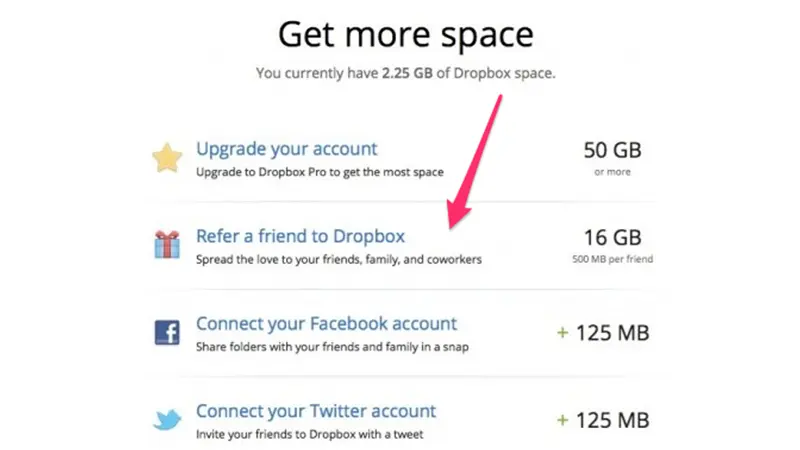
Dropbox’s referral program is legendary. Instead of cash, they offer more of their core product: storage space.
- Referrer Reward: 500 MB of extra storage space per referral (up to 16 GB for Basic accounts).
- New Customer Reward: The same—500 MB of bonus storage space to get them started.
Rothy’s: The Stylish "Give $20, Get $20"
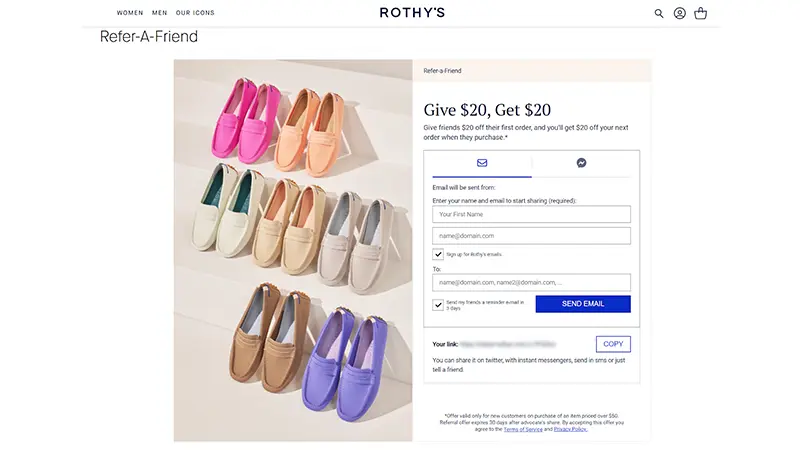
This popular shoe and bag merchant uses the classic two-sided model with a minimum purchase requirement to ensure profitability.
- Referrer Reward: $20 off their next purchase.
- New Customer Reward: $20 off their first purchase of $50 or more.
Harry's: Simple and Effective Grooming Rewards
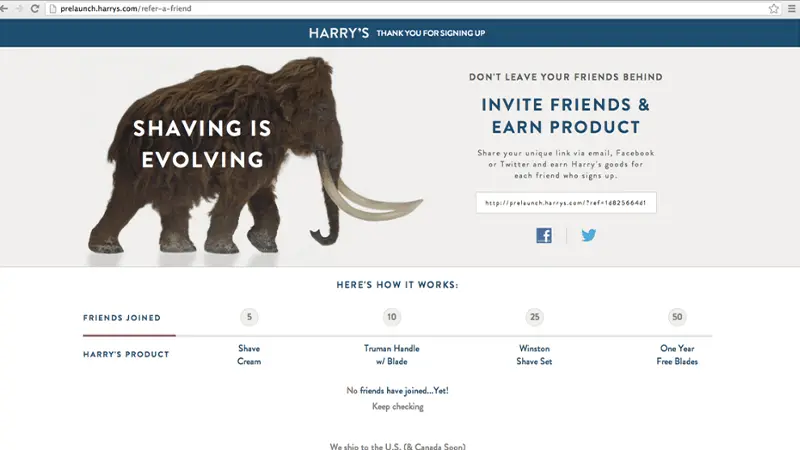
The men's grooming brand keeps its program clean and simple, offering a straightforward discount to both parties.
- Referrer Reward: $5 off their next order.
- New Customer Reward: $5 off their first order.
Outdoor Voices: Points-Based Perks

This apparel brand created a more engaging, points-based system that rewards more than just referrals.
- Reward: Customers earn points for referrals, writing reviews, and engaging on social media. These points can be redeemed for discounts and exclusive access to products.
MeUndies: A Straightforward Cash Incentive
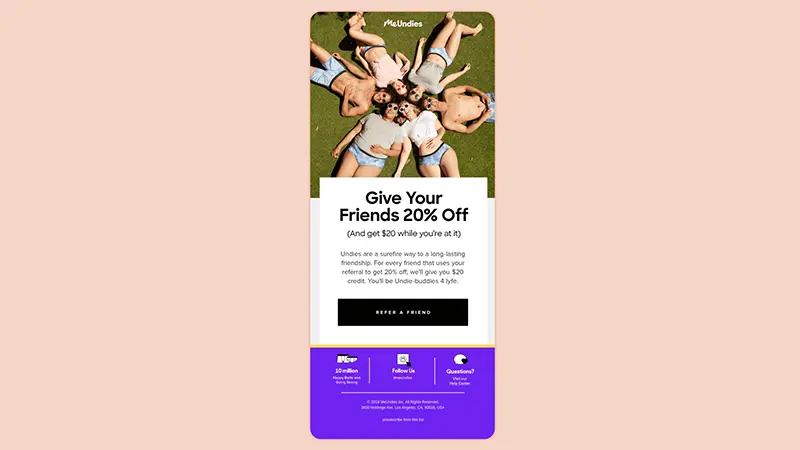
The underwear brand offers a generous cash reward, making the incentive very attractive.
- Referrer Reward: $25 for every new customer referred.
- New Customer Reward: A discount on their first purchase of at least $12.
Uber: Tiered Rewards for Riders and Drivers

Uber’s program is a great example of a tiered system where rewards vary based on factors like location and existing offers.
- Referrer Reward: Varies, but can be a cash bonus for drivers or a discount for riders.
- New Customer Reward: A discount (either a percentage or dollar value) off their first ride.
Numan: A Healthcare Subscription Model

The weight-loss subscription service offers a significant discount that benefits both parties for their next order.
- Referrer Reward: £100 off their next order.
- New Customer Reward: £100 off their first order after being approved for treatment.
What is the Easiest Way to Manage Discounts on Shopify?
Once you have a referral strategy, the final piece of the puzzle is execution. How do you actually manage all these discounts without creating a logistical nightmare?
Why Apps are a Lifesaver for Busy Store Owners
Let's be real: manually creating, tracking, and applying hundreds of unique discount codes is a recipe for a headache. This is where automation becomes your best friend. Using a referral marketing tool or a dedicated discount app takes care of the heavy lifting. These tools can automatically generate unique codes, track who refers whom, and apply the correct rewards once a sale is made.
Making Complex Promotions Simple
Having a great system for handling discounts is a huge part of your overall Shopify Customer Retention Strategies. You need a way to easily set up the specific rewards you’ve decided on, whether it's a percentage off, a fixed amount, or a tiered offer. For example, a Shopify store owner could use a specialized bulk discount app like Discounty to create and manage the specific types of rewards offered, such as volume discounts or minimum cart discounts, making sure they're applied correctly when a referral is redeemed. This lets you focus on the fun part—promoting your program—instead of getting lost in the technical weeds.
Final Words: Get Ready to Grow
So, let's bring it all home. Building a referral program is one of the smartest ways to grow your Shopify store. You're not just finding new customers; you're letting your current fans do the work for you, building on real trust and excitement.
You now have the playbook: understand your customers, create a "win-win" reward that makes everyone feel good, and set up a simple system to manage it. A great referral discount isn't just a promotion; it's a high-five to your community and a warm welcome to new members. It's one of the best tools you have for building true customer loyalty with discount and creating a brand that people are genuinely excited to share.

